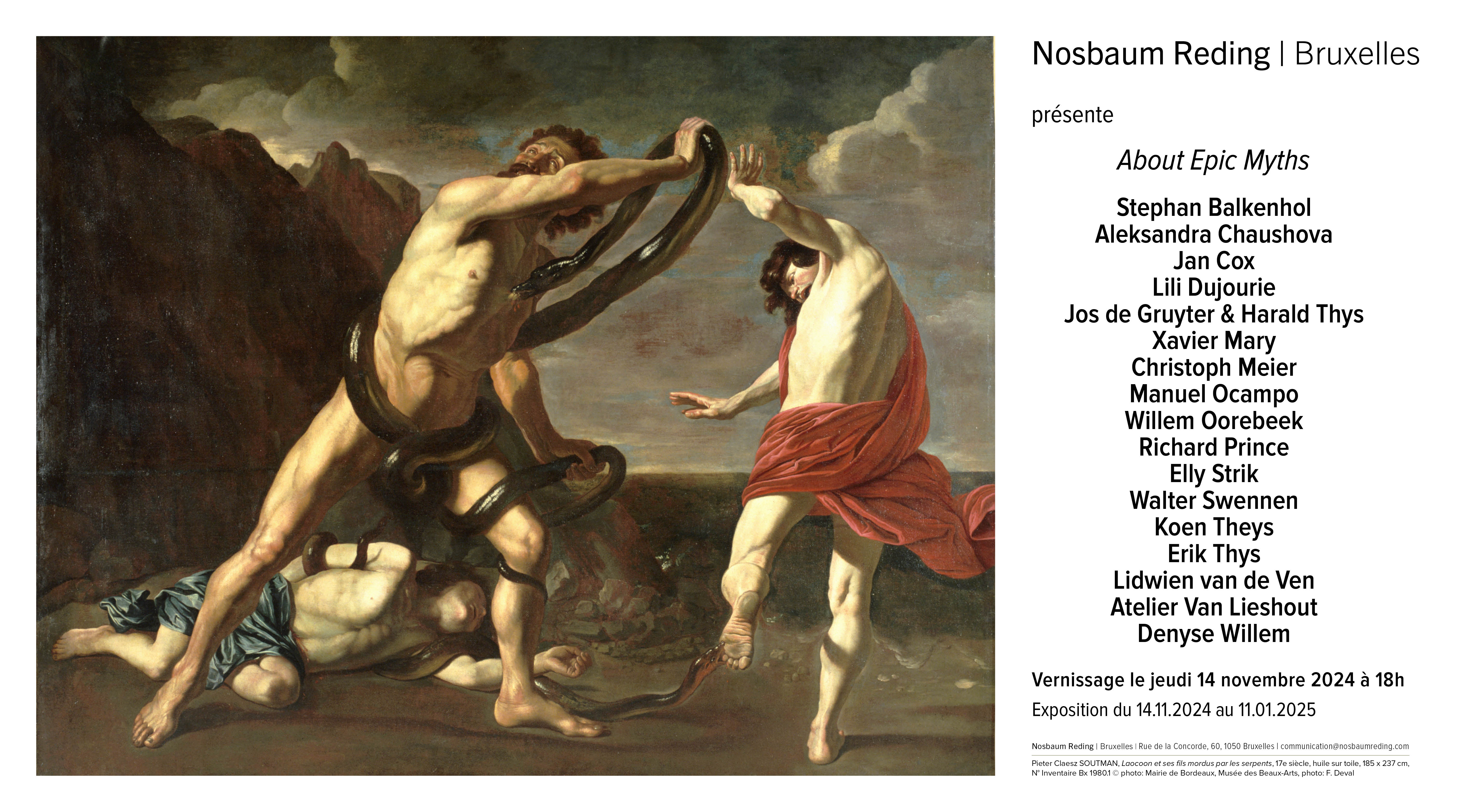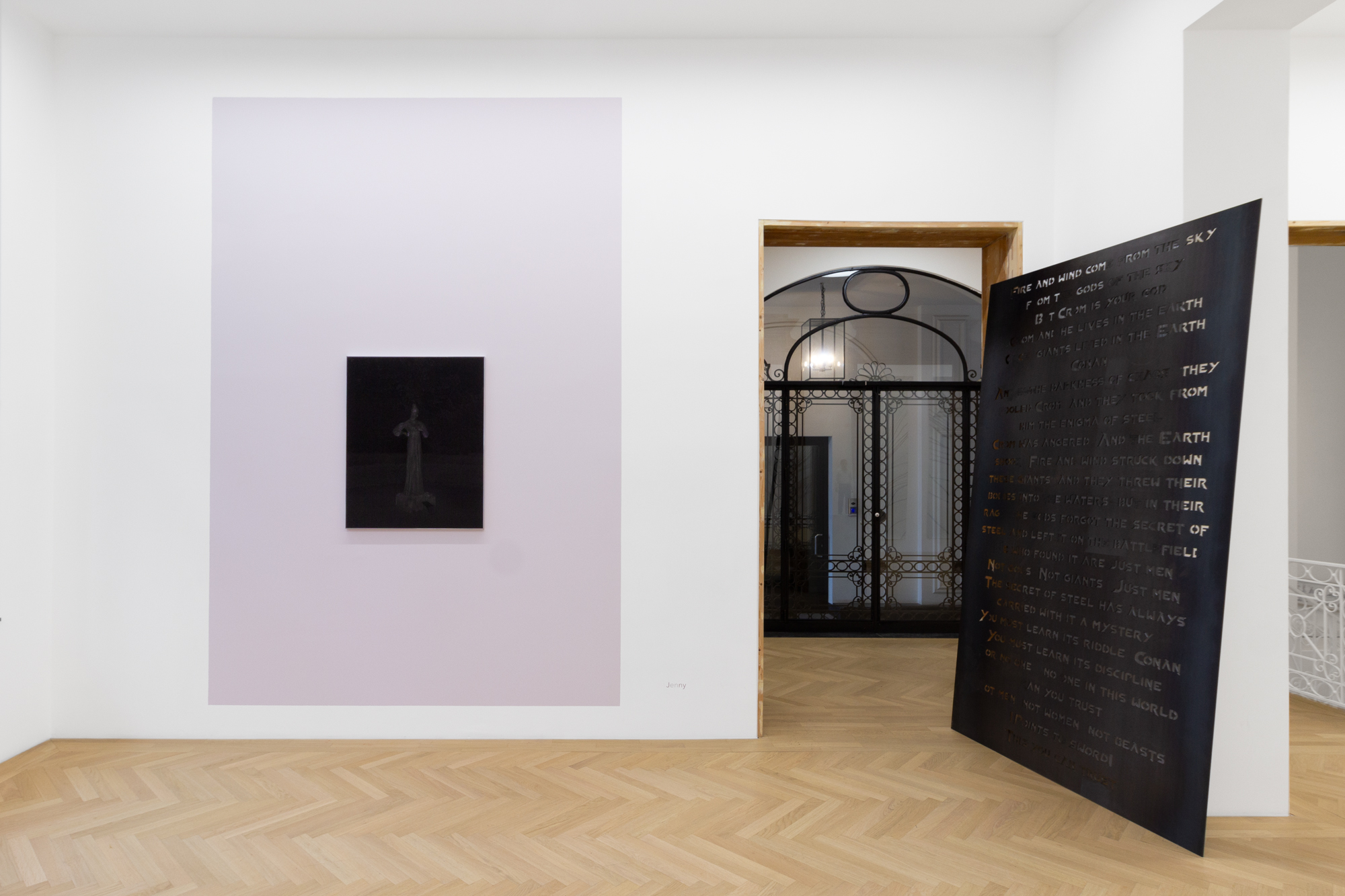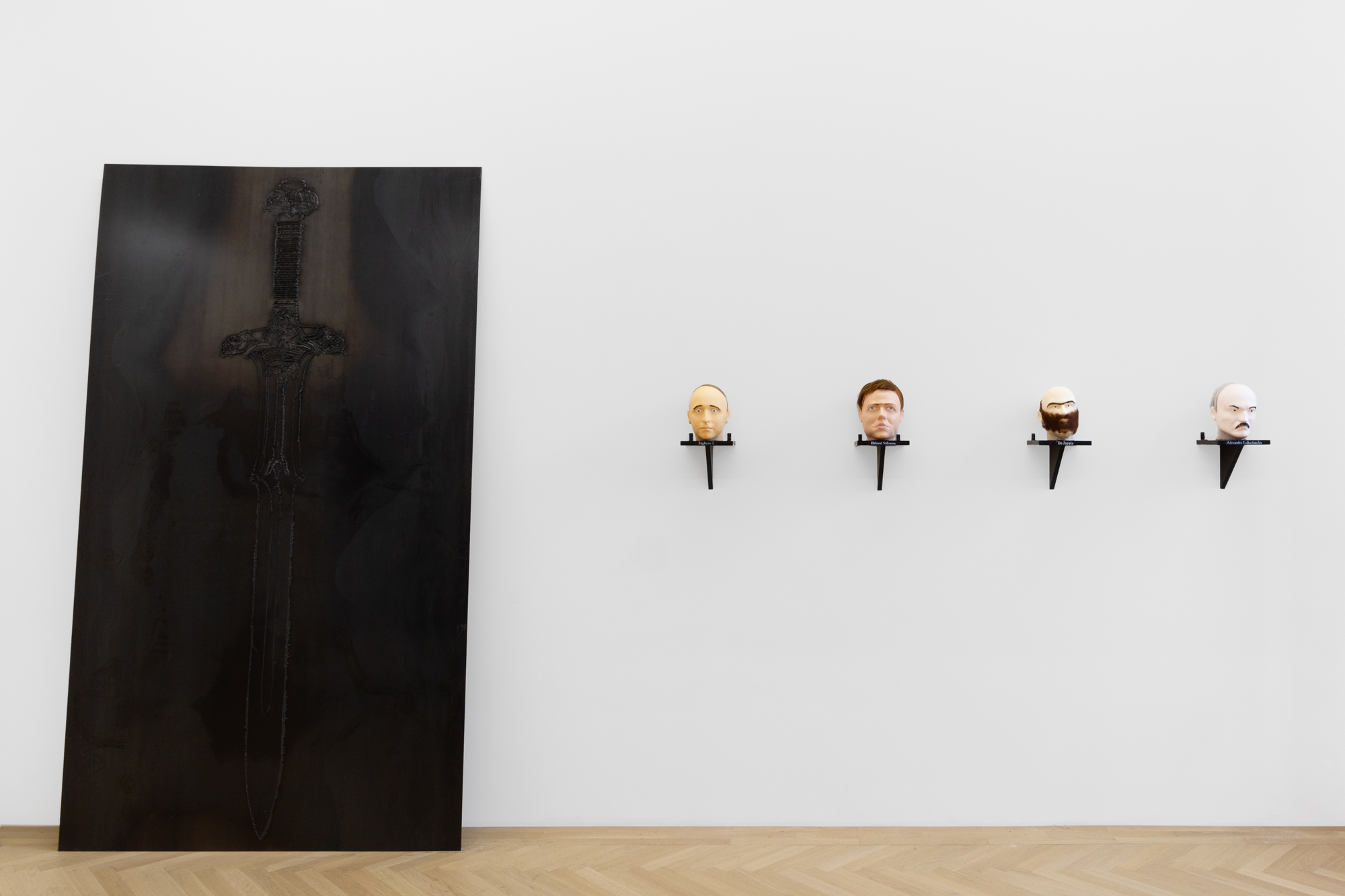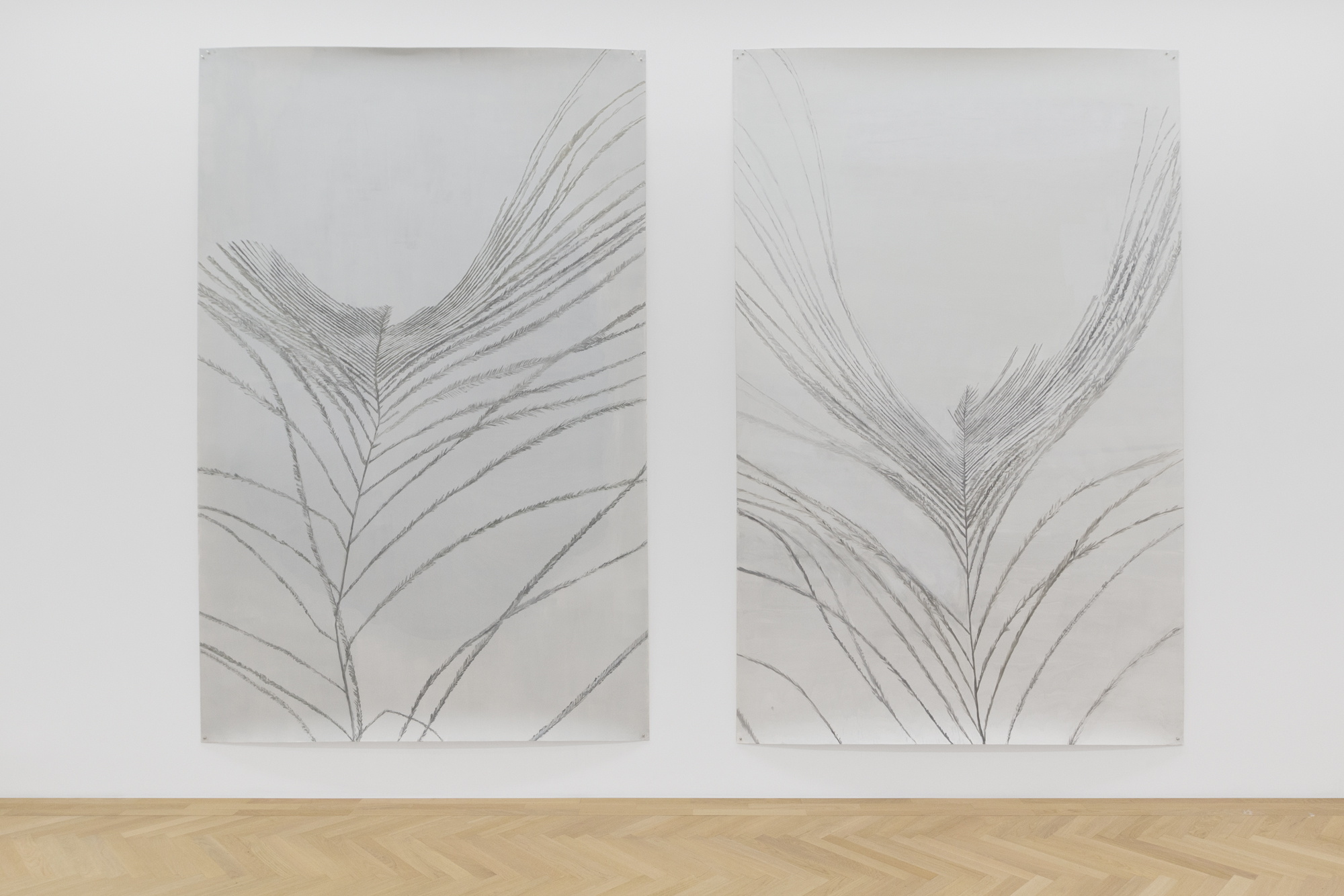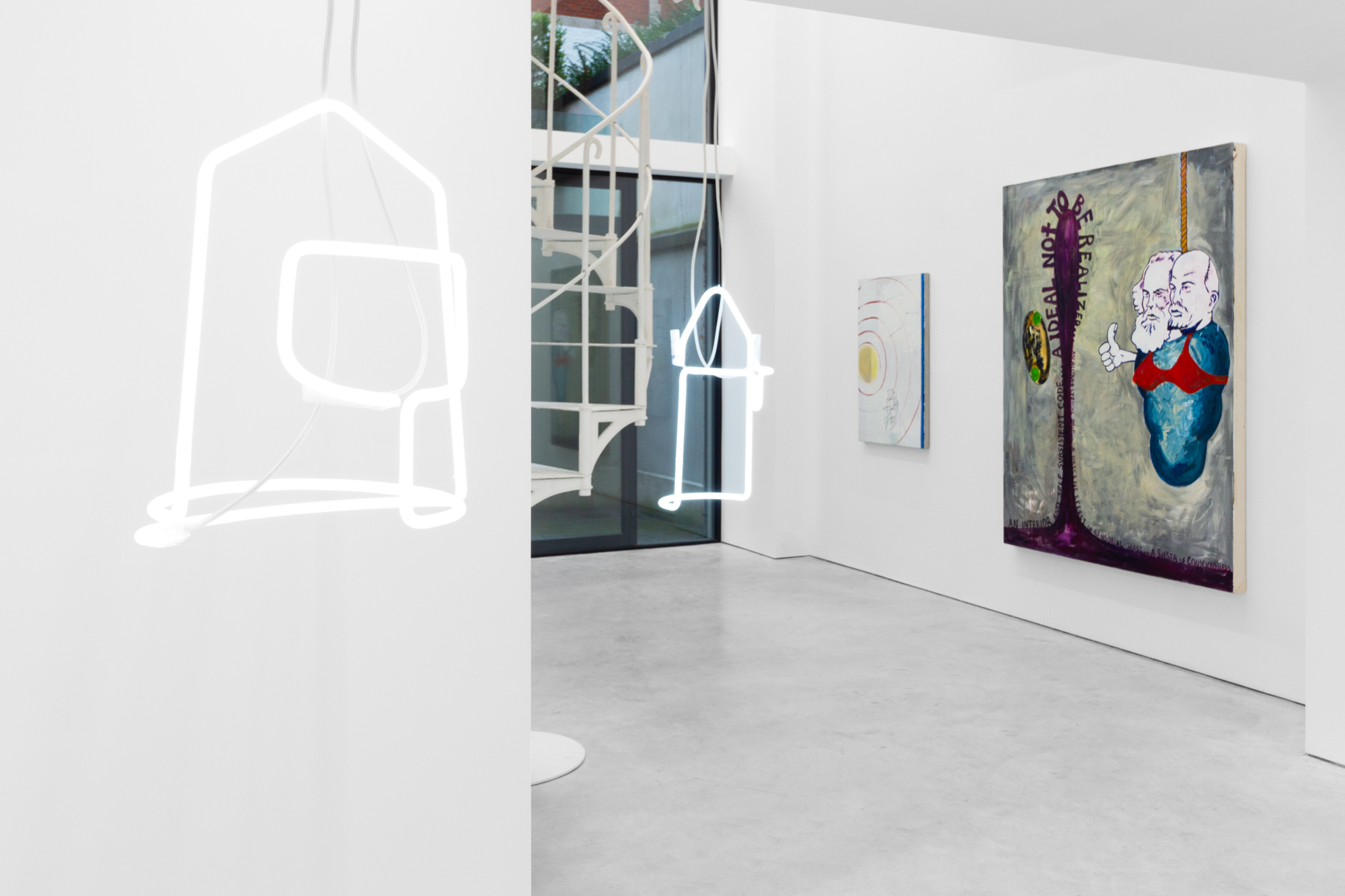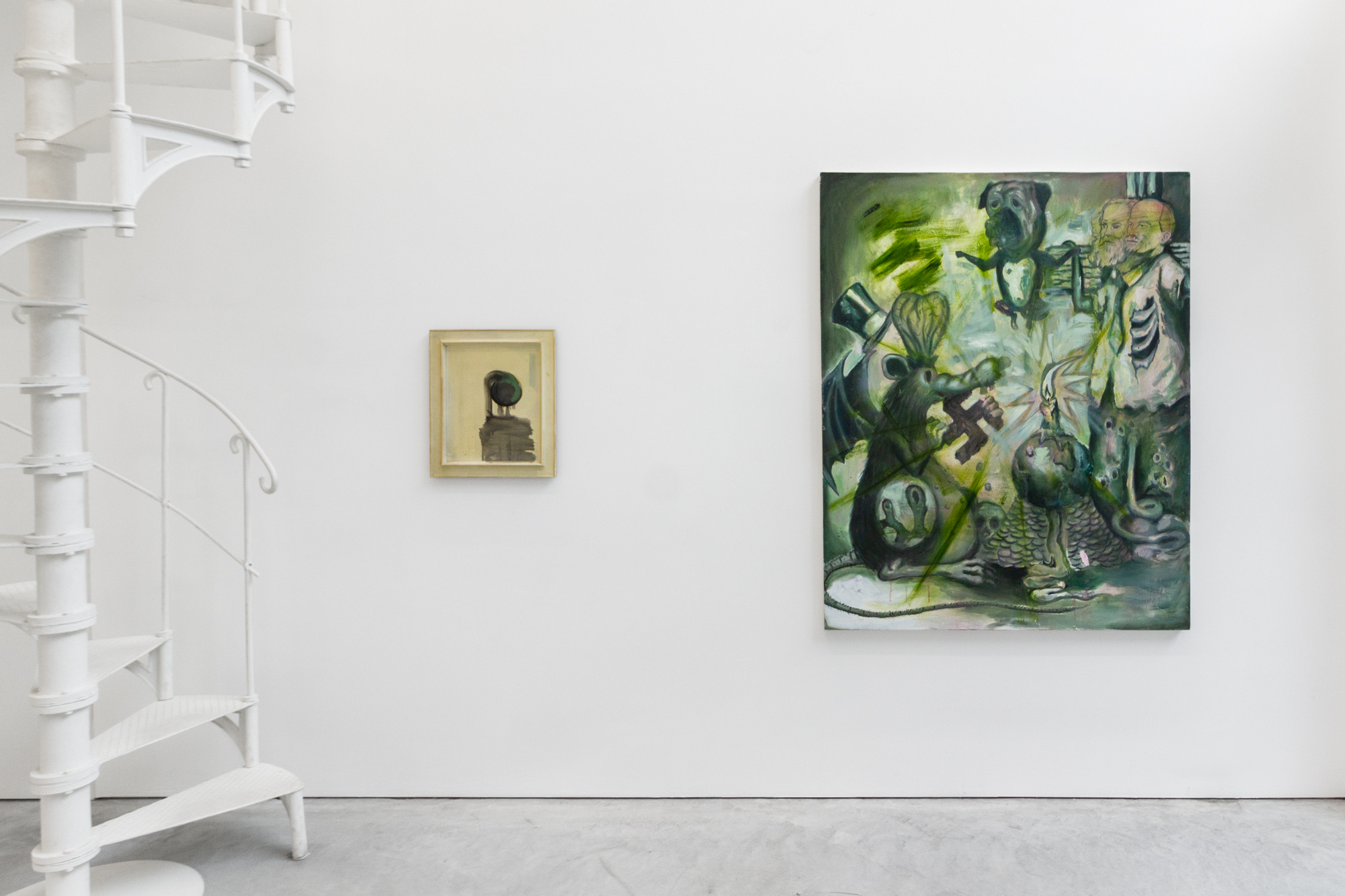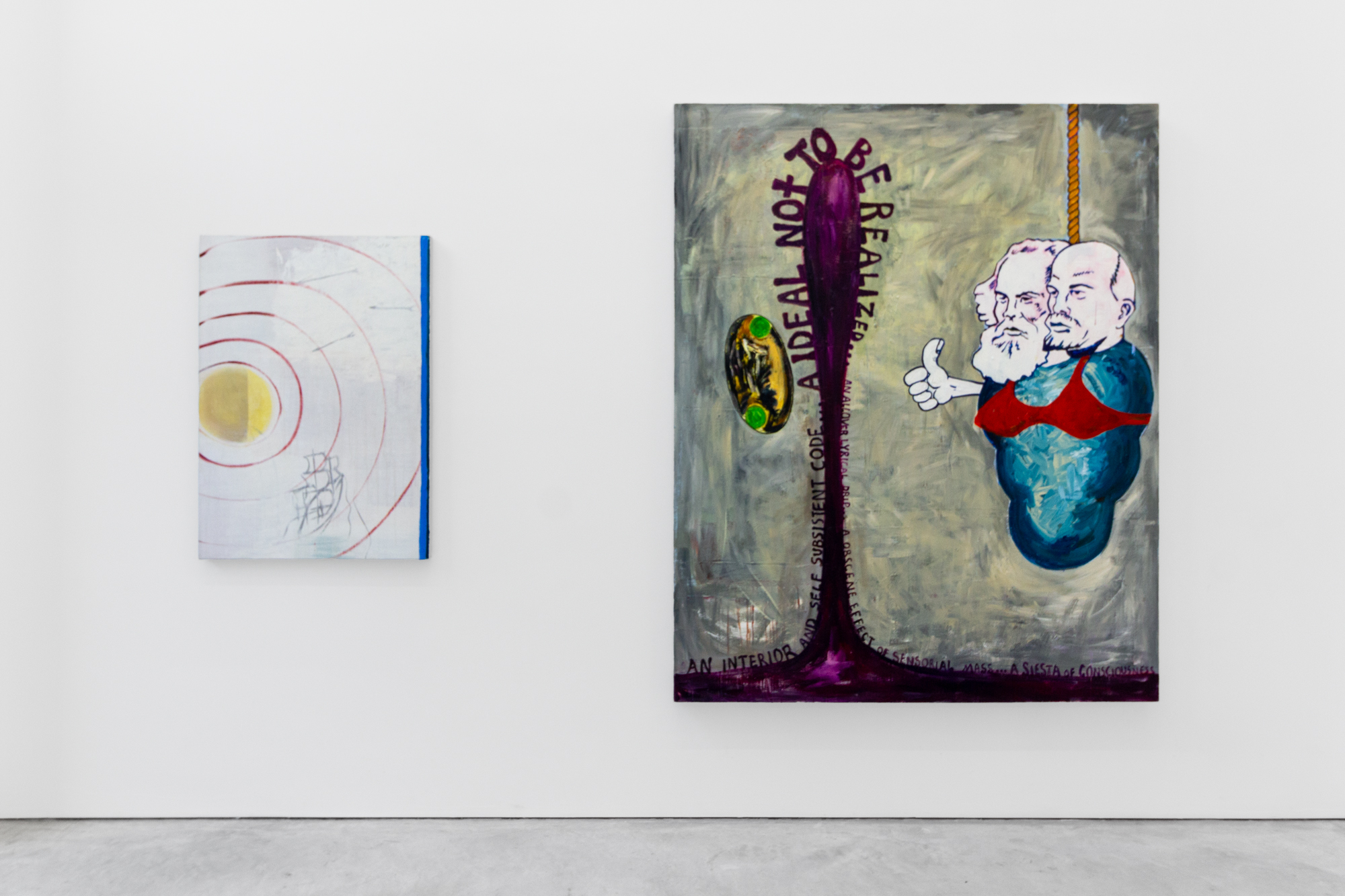About Epic Myths
14.11.2024 - 08.2.2025
Informations
About Epic Myths
With a selection of artworks by :
Stephan Balkenhol
Aleksandra Chaushova
Jan Cox
Lili Dujourie
Jos de Gruyter & Harald Thys
Xavier Mary
Christoph Meier
Manuel Ocampo
Willem Oorebeek
Richard Prince
Elly Strik
Walter Swennen
Koen Theys
Erik Thys
Lidwien van de Ven
Atelier Van Lieshout
Denyse Willem
Opening : Thursday 14 October 2024 at 18:00
(EN)
About Epic Myths
The epic-mythical narrative remains a catalytic formula today, offering the public something both captivating and enlightening. Heroic stories aim to instill morality in communities across ages, providing them with meaning and purpose. They celebrate the trials of one or more heroes who endure adventurous situations and unimaginable forces, or fall victim to them.
The mythic epic acts as a catalyst, and the hero as an avatar for us, mere mortals: to learn and entertain, certainly, but also to help us carry on.
The idea of the epic myth remains deeply rooted in society and the psyche. The hero figure thrives in video games, advertisements, action films, television, social media, and propaganda. It has spread and democratized across all social classes, allowing farmers and industrial workers alike to reach for heroic status. The hero's sphere has also expanded to sports arenas or even digital spaces, where they carve out a path from the parental garage to the centers of technological, and even political, power.
Stories of historical figures transcend the ages: Julius Caesar, depicted born by Caesarean section by Denyse Willem, is already armed with a sword. In another painting by the artist, the wolf emerges from the woods, led by Little Red Riding Hood - a hero of popular fiction who shaped our childhood minds. The sword, an emblematic attribute of the hero, also appears in the work of Xavier Mary, where Conan the Barbarian's weapon rests on a steel surface.
More contemporary figures, such as major political personalities, can also embody this heroic posture: for instance, Alexander Lukashenko appears in the series of plaster busts by Jos de Gruyter and Harald Thys, while a satirical painting by Manuel Ocampo presents Vladimir Ilyich Lenin and Karl Marx as a wrecking ball. More discreet figures find their way into the grand narrative of History, such as Jenny Marx - the wife of the latter - emerging in the shadow of a photograph by Lidwien van de Ven.
Erik Thys's 'auto-portraits' present a series of cars, now elevated to the status of an extension of their owner's personality. In advertisements, they are portrayed as indispensable companions for a modern adventure, akin to the loyal steed of yore.
Every epic hero has an Achilles' heel. If the story is not well told or passed down by other mortals, it fades, forgotten by the public. Artists must employ all their strength to revive the heroic, reinvent the formula, or keep it at a distance.
Etienne Wynants
---
(FR)
Sur l'épopée mythique
Le récit mythique épique est aujourd'hui encore une recette catalytique qui propose au public quelque chose d'attractif et d'édifiant. Les récits héroïques visent à inculquer une moralité aux communautés à travers les époques, et à leur donner un sens et un but. Ils exaltent les vicissitudes d'un ou de plusieurs héros qui endurent des situations aventureuses et des forces inimaginables, ou s'abîment.
L'épopée mythique sert de catalyseur, et le héros d'avatar pour nous, les simples mortels : pour apprendre et se divertir, bien sûr, et pour nous permettre de continuer.
L'idée du mythe épique reste profondément ancrée dans la société et la psyché. La figure du héros prospère dans les jeux vidéo, les images publicitaires, les films d'action, la télévision, les médias sociaux et la propagande. Elle s'est étendue et démocratisée dans toutes les classes sociales, agriculteurs et ouvriers industriels peuvent également s'émanciper et accéder au statut d'héros. L'horizon du héros s'est aussi étendu aux arènes sportives ou dématérialisé à travers l'industrie digitale : le héros traçant son chemin depuis le garage parental jusqu'aux centres de la puissance technologique, voire politique.
Les récits de personnages historiques traversent les âges : Jules César, né par césarienne dans la peinture de Denyse Willem, est déjà armé d'un glaive. Dans une autre toile de l?artiste, le loup sort du bois mené par le petit chaperon rouge : un héros de fictions populaires ayant marqué nos esprits d'enfants. L'épée, attribut emblématique du héros, se retrouve dans l'oeuvre de Xavier Mary où celle de Conan le Barbare repose sur une surface d'acier.
Des figures plus actuelles, telles que des personnages politiques majeurs, peuvent également incarner cette posture héroïque : ainsi, Alexander Loukachenko se retrouve dans la série de bustes en plâtre de Jos de Gruyter et Harald Thys, tandis qu'une peinture satyrique de Manuel Ocampo présente Vladimir Ilitch Lénine et Karl Marx dans un boulet de démolition. Des figures plus discrètes se frayent un chemin dans le grand récit de l?Histoire, telle que Jenny Marx - l'épouse de ce dernier - qui émerge dans l'ombre d'une photographie de Lidwien van de Ven.
Les autos-portraits d'Erik Thys nous montrent une série de voitures, élevées aujourd'hui au statut d'extension de la personnalité de leur propriétaire. Dans les publicités, elles incarnent le compagnon indispensable d'une aventure moderne, à l'instar du fidèle destrier d'autrefois.
Tout héros épique a un talon d'Achille. Si l'histoire n'est pas bien racontée ou traduite par d'autres mortels, elle s'achève, oubliée par le public. Les artistes doivent user de toutes leurs forces pour faire revivre l'héroïque, réinventer la recette ou la tenir à distance.
Etienne Wynants
---
Omtrent het episch mythische
Het mythische epos is ook vandaag nog een katalyserend recept dat het publiek iets aantrekkelijks en opbouwends biedt. Heroïsche verhalen zijn erop gericht gemeenschappen door de tijden heen een moraal bij te brengen, en hen een doel en een betekenis te geven. Ze roemen het wedervaren van een held/in die zich staande houden doorheen avontuurlijke situaties en onvoorstelbare krachten. Of ten onder gaan.
Het mythische epos fungeert als katalysator, en de held als avatar voor ons, gewone stervelingen: om te leren en ons te vermaken, natuurlijk, en om ons in staat te stellen verder te gaan.
De idee van het epische verhaal blijft diep verankerd in de samenleving en de psyche. De heldenfiguur floreert in videogames, reclamebeelden, actiefilms, televisie, sociale media en propaganda. Deze figuur heeft zich uitgebreid en gedemocratiseerd tot alle lagen van de bevolking; boeren en industriële arbeiders kunnen zich nu ook emanciperen en de status van held bereiken. Het speelveld van de held heeft zich tevens uitgebreid naar de sportarena?s of is gedigitaliseerd in de technologie-industrie: een held die zijn pad baant vanuit de ouderlijke garage naar de centra van technologische, en zelfs politieke, macht.
Verhalen over historische figuren gaan door de eeuwen heen: Julius Caesar, in een schilderij van Denyse Willem weergegeven als keizersnede geboren en al met een zwaard gewapend. In een ander doek van de kunstenaar komt de wolf uit het bos, geleid door Roodkapje: een held uit populaire ficties die onze kinderjaren heeft gevormd. Het zwaard, het iconische attribuut van de held, keert terug in het werk van Xavier Mary, waarin dat van Conan de Barbaar op een stalen oppervlak rust.
Ook hedendaagse figuren, zoals belangrijke politieke personages, kunnen deze heroïsche houding aannemen: zo verschijnt Alexander Loukachenko in de serie gipsbustes van Jos de Gruyter en Harald Thys, terwijl een satirisch schilderij van Manuel Ocampo Vladimir Ilitch Lenin en Karl Marx toont als een sloopkogel. Meer discrete figuren banen zich een weg in het grote verhaal van de Geschiedenis, zoals Jenny Marx ? de echtgenote van laatstgenoemde ? die opduikt in de schaduw van een foto van Lidwien van de Ven.
De ?auto-portretten? van Erik Thys tonen een reeks auto?s, vandaag de dag verheven tot een verlengstuk van de persoonlijkheid van hun eigenaar. In reclames worden ze gepresenteerd als de onmisbare metgezel voor een moderne onderneming, zoals het trouwe strijdros van weleer.
Elke epische held heeft zijn achilleshiel. Als het verhaal niet goed wordt verteld of door andere stervelingen wordt doorgegeven, raakt het verloren en vergeten door het publiek. Kunstenaars moeten al hun kracht inzetten om het heroïsche te laten herleven, het recept opnieuw uit te vinden of het op afstand te houden.
Etienne Wynants
